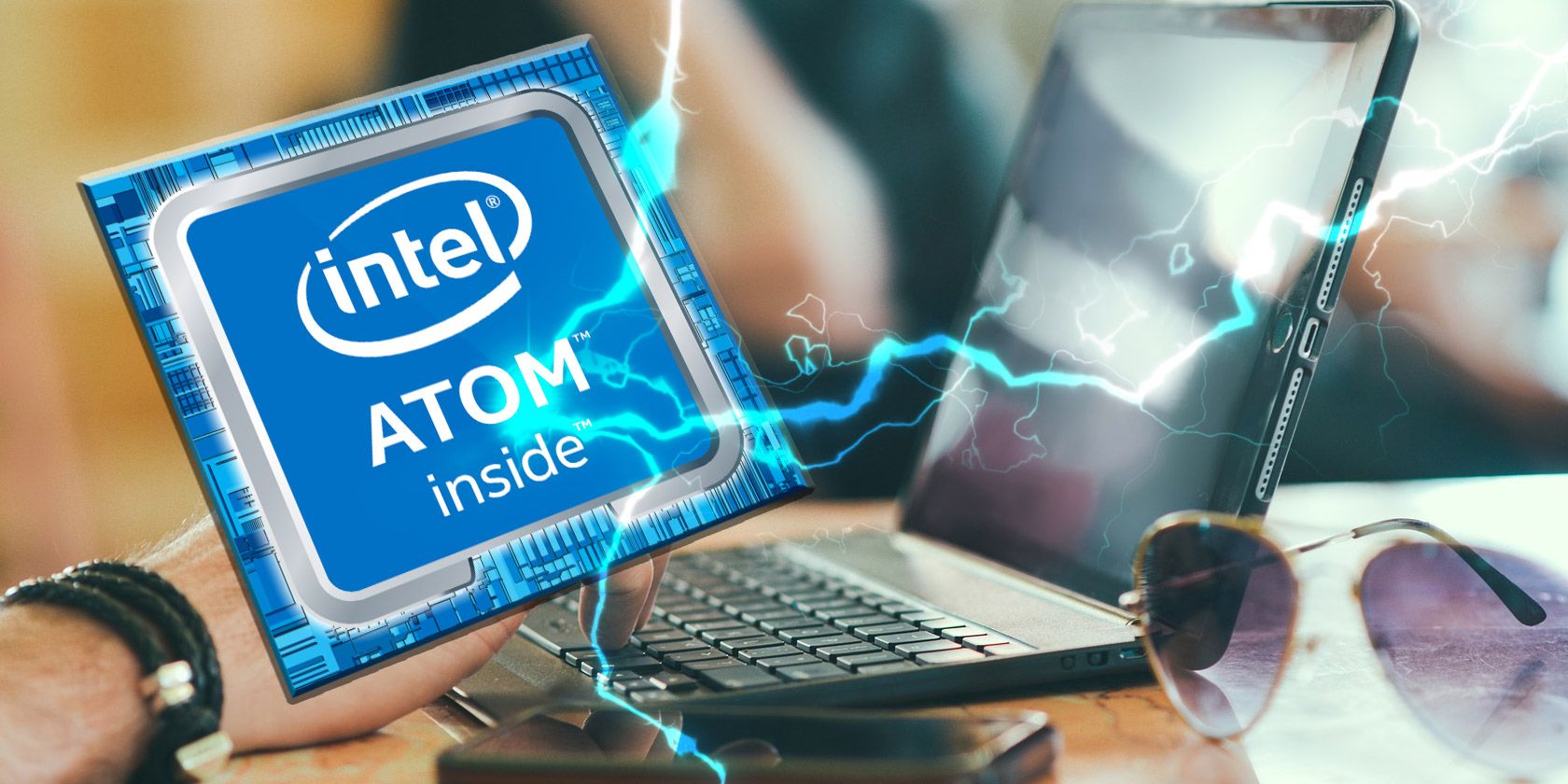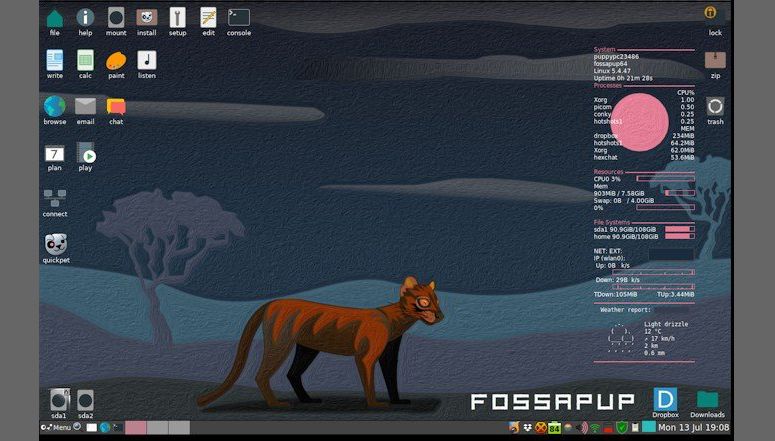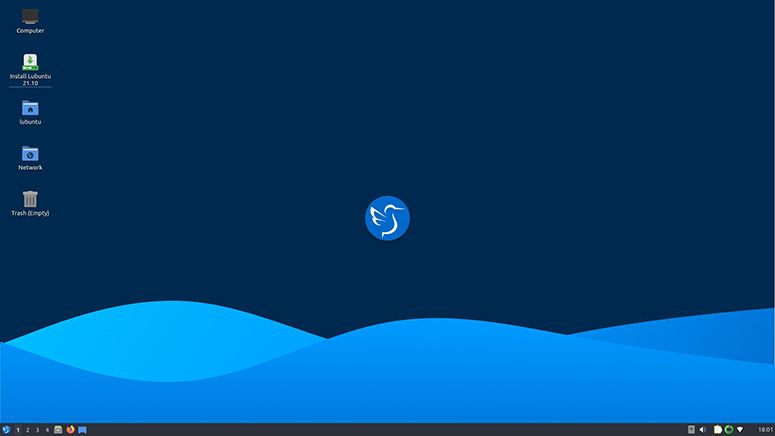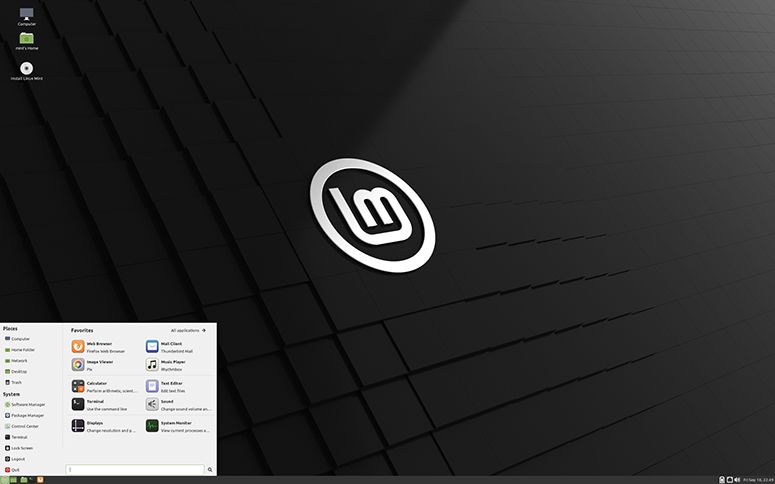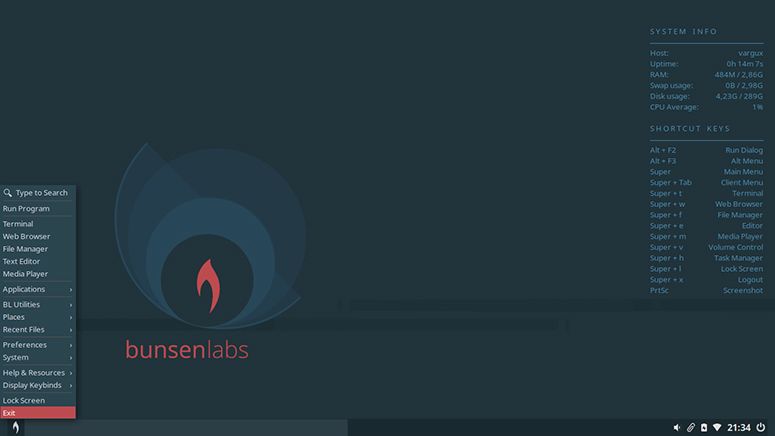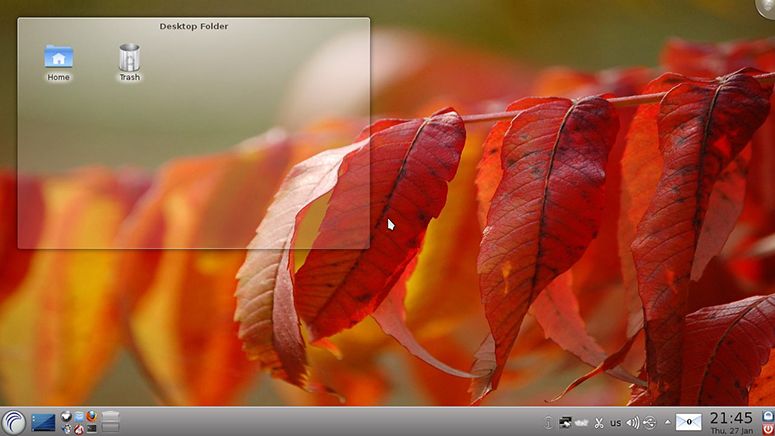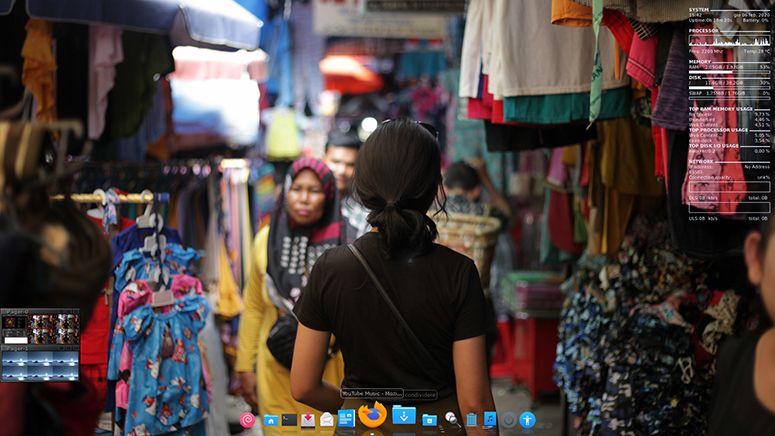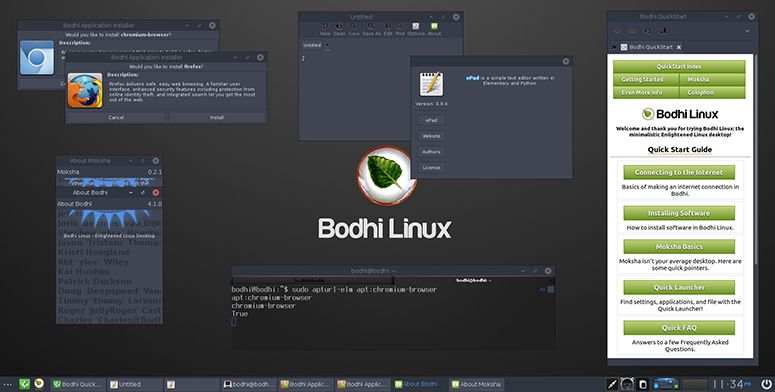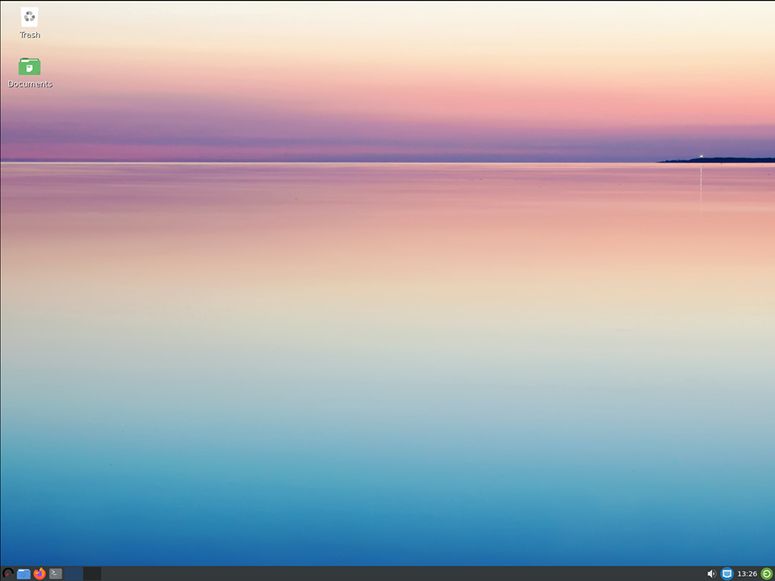Intel's Atom processor is a line of low-voltage microprocessors that first appeared in 2008. They power many ultra-portable devices, like netbooks, net-tops, and tablets. But the power-efficient Atom quickly showed its limits in keeping up with current software.
That doesn't mean you should let your Atom-powered device collect dust in a closet! You can bring it back to life with a Linux distribution. Linux operating systems generally use fewer system resources than their Windows counterparts, and there is no shortage of options.
Here are the best lightweight Linux distros for netbooks with Intel Atom processors.
1. Puppy Linux
Puppy Linux boasts a tiny memory footprint (or pawprint). It's roughly 300MB and can live on flash drives and DVDs. You can even run the entire operating system from RAM. Doing so lends a speedy experience on any device, overcoming slow hard drive read-write speed. This makes Puppy Linux one of the best Linux distributions for old PCs and netbooks.
Puppy Linux versions are based on Ubuntu long-term support releases, so you can keep this desktop installed for a long time, making it an ideal choice of Linux for netbooks with Atom processors.
Download: Puppy Linux
2. Lubuntu
Lubuntu pitches itself as both lightweight and fast. It comes with the LXQt desktop environment and provides a good netbook Linux desktop for people who don't want to tinker with their computer all that much.
System requirements are undemanding. The Lubuntu website recommends 1GB of RAM for intensive web apps like YouTube, Facebook, and Google Docs.
Download: Lubuntu
3. Linux Mint (MATE or Xfce)
When it comes to Linux distributions, Mint is one of the more popular options. This Ubuntu and Debian-based distribution has a modern, simple elegance. It's pretty user-friendly, too. Apps and multimedia codecs are easy to find.
There are several variants of Linux Mint available, with MATE and Xfce virtually tied as great examples of Linux desktops for Intel Atom processors. Both are well suited to netbooks and most underpowered computers in general. Of all the distributions on this list, Mint offers arguably the most functional and complete experience.
While we've selected Linux Mint for its particular appeal to newcomers, virtually any distro running MATE or Xfce will run as well. If you prefer Ubuntu, Fedora, or openSUSE, give them a go instead. Compared to the other options on this list, MATE or Xfce may run better on netbooks with more RAM.
For more info, see our comparison of Mint and Ubuntu.
Download: Linux Mint
4. BunsenLabs
As lightweight Linux distributions go, BunsenLabs is one of the leanest offerings. It's a continuation of CrunchBang, which avoided the traditional desktop environment in favor of a retooled version of the Openbox window manager.
While this Debian-based distro is a highly suited Linux for Intel Atom processors, its spartan design may not be for everyone. You won't find the eye candy you see in Lubuntu or Linux Mint.
BunsenLabs isn't the only distro to carry CrunchBang's torch, but it does appear to be the most active. Another option is CrunchBang++. If you're feeling adventurous, you can run a rolling release version based on Arch Linux, called ArchBang.
Download: BunsenLabs
5. Porteus
Small, fast, and bootable from a variety of storage media, Porteus is one of the best Linux distros for Intel Atom netbooks. At under 300MB, it's super-efficient, comes in both 32 and 64-bit packages, and can run solely from RAM.
Note that Porteus is modular, so rather than using a package manager and connecting to the internet during initial installation, Porteus provides pre-compiled modules that you can activate or deactivate before installing.
This all comes together in an efficient experience that can boot in under 30 seconds, making Porteus a top version of Linux for netbooks.
Download: Porteus
6. Elive
Want a unique Intel Atom Linux experience? Check out Elive, a very small Linux distro with its own custom desktop environment. A bunch of apps and a few games come preinstalled. They appear on a dock at the bottom of the screen.
Elive is not geared for newcomers or enterprise use. Who's it for? Let the development team tell you:
"Elive is not made for newbies. Elive is not made for experienced people. Elive is not made for enterprises or personal user. Elive is art. It is simply for the people who appreciate it and want to use it. Feel free to try Elive, because only you decide what you want in this world!"
While it's not clear who Elive is for, we do know what Elive is for—old or underpowered machines. The minimum requirements for Elive are a CPU speed of 500MHz, 192MB RAM, and 700MB of hard drive space.
Download: Elive
7. Bodhi Linux
If your Intel Atom netbook is a secondary computer, why not use it to run the software you might be too nervous about running on your main machine? Consider Bodhi Linux. This small Linux project has been around for years. It doesn't have the manpower you find in larger projects, but it's functional.
With Bodhi Linux running on a netbook, you can keep up on the work taking place on the quirky, relatively unknown Moksha desktop interface. It might just win you over from comparable experiences such as LXQt and Xfce.
Bodhi Linux requires at least a 500MHz processor, 512MBRAM, and 5GB disk space. So, you can easily install it on your netbook with Intel Atom processors like the n270 series.
Download: Bodhi Linux
8. wattOS
While you're taking a look at quirky lightweight Linux distros, add wattOS to your list. The gist of wattOS is to take Ubuntu stripped of all the non-essentials, then add the i3 tiling window manager on top. The "Microwatt" edition requires only 192MB of RAM and 700MB of disk space.
If you prefer a more common interface, try the LXDE edition instead. It needs a little more RAM, but even on Intel Atom netbooks, that's probably not a big deal.
Download: wattOS
Will You Use Linux on Your Intel Atom Netbook?
When Intel Atom netbooks hit the scene, creators saw an opportunity for Linux to thrive on smaller devices. Ubuntu made a netbook edition. So did KDE. Joli OS was essentially a Chromebook before Chromebooks came along. A favorite of ours was a project called Moblin, which turned into MeeGo, but is now defunct.
In the end, most manufacturers chose to ship the already outdated Windows XP desktop rather than take a chance on Linux.
Yet despite how many years have passed, Intel Atom netbooks and Linux remain a great couple. If you need help getting any of the above options onto your netbook, here's a quick guide to installing Linux.

